Investigations of the Microstructure and Mechanical Properties of 17-4 PH ss Printed Using a MarkForged Metal X
Abstract
1. Introduction
2. Experimental
2.1. Materials and Methods
2.2. Heat Treatment
2.3. Hardness and Tensile Testing
2.4. Microstructure and Phases
3. Results and Discussions
3.1. Phase Identification
3.2. Microstructure
3.2.1. As Printed
3.2.2. Post-Fabrication Heat Treatment
3.2.3. Porosity
3.3. Hardness Testing
3.4. Tensile Testing
Fractography
4. Conclusions
- -
- The Markforged-Metal-X-manufactured 17-4 ss samples were predominantly martensitic in phase, with some retained austenitic phase. The XRD measurements exhibited partial transformation of the austenite phase into the martensite phase after the heat treatment. For the complete transformation of the austenite phase into an α′-bcc phase, a different heat treatment scheme than the H900 needs to be considered.
- -
- The microstructure of the Markforged-Metal-X-manufactured 17.4 ss was characterized by patterned voids or unfilled spaces that could eventually affect the mechanical integrity of the material. The voids are believed to have occurred mainly due to a lack of fusion of adjacent filaments.
- -
- The porosity analyzed in the dense region of the material was about 3.5%. Most of the larger pores observed were at the triple junctions that were rich in NbC precipitates.
- -
- Post-fabrication heat treatment enhanced the hardness by 17–28% and the tensile strength by 21–27%, depending on the heat treatment conditions.
- -
- The hardnesses and the tensile strengths of the samples under directly aged conditions were slightly lower than those samples tested after the solid solution and precipitation hardening heat treatment. The difference could have been due to the transformation of austenite into martensite structures following the solid solution heat treatment.
- -
- The hardness of the as-printed samples (331 ± 28 HV) and heat-treated samples under the H900 condition (417 ± 29 HV) were comparable with the reported values in the literature.
- -
- The maximum elongation achieved was about 3.6%, which was comparatively low relative to results from other AM techniques.
- -
- The maximum ultimate tensile strengths from the as-printed and H900 conditions were 551 and 1078 MPa, respectively. These were lower than most of the observations for conventional and AM methods.
- -
- The presumption for lower-strength 17-4 ss from the current study relative to reports in the literature based on the Markforged Metal X printer may have been due to differences in fabrication conditions (e.g., sintering temperature, soaking time, and build orientation concerning tensile load).
- -
- The inferiority of the tensile strength relative to other AM techniques could be related to incomplete fusion of the filament; this might have been due to the low sintering temperature, which left behind pattered voids; the infill orientation relative to the applied load; and the high pore concentration.
- -
- The results indicated that the Markforged printer is a promising technology given that the printing processes are fully developed and optimized.
Author Contributions
Funding
Data Availability Statement
Conflicts of Interest
References
- Gonzalez-Gutierrez, J.; Cano, S.; Schuschnigg, S.; Kukla, C.; Sapkota, J.; Holzer, C. Additive Manufacturing of Metallic and Ceramic Components by the Material Extrusion of Highly-Filled Polymers: A Review and Future Perspectives. Materials 2018, 11, 840. [Google Scholar] [CrossRef] [PubMed]
- ASTM F2792-12A; Standard Terminology for Additive Manufacturing Technologies: Designation F2792-12a. ASTM International: West Conshohocken, PA, USA, 2012.
- Hirt, L.; Reiser, A.; Spolenak, R.; Zambelli, T. Additive Manufacturing of Metal Structures at the Micrometer Scale. Adv. Mater. 2017, 29, 1604211. [Google Scholar] [CrossRef] [PubMed]
- Singh, S.; Ramakrishna, S.; Singh, R. Material issues in additive manufacturing: A review. J. Manuf. Process. 2017, 25, 185–200. [Google Scholar] [CrossRef]
- Tiwari, S.K.; Pande, S.; Agrawal, S.; Bobade, S.M. Selection of selective laser sintering materials for different applications. Rapid Prototyp. J. 2015, 21, 630–648. [Google Scholar] [CrossRef]
- Gu, D.D.; Meiners, W.; Wissenbach, K.; Poprawe, R. Laser additive manufacturing of metallic components: Materials, processes and mechanisms. Int. Mater. Rev. 2013, 57, 133–164. [Google Scholar] [CrossRef]
- Rafi, H.K.; Pal, D.; Patil, N.; Starr, T.L.; Stucker, B.E. Microstructure and Mechanical Behavior of 17-4 Precipitation Hardenable Steel Processed by Selective Laser Melting. J. Mater. Eng. Perform. 2014, 23, 4421–4428. [Google Scholar] [CrossRef]
- Henry, T.C.; Morales, M.A.; Cole, D.P.; Shumeyko, C.M.; Riddick, J.C. Mechanical behavior of 17-4 PH stainless steel processed by atomic diffusion additive manufacturing. Int. J. Adv. Manuf. Technol. 2021, 114, 2103–2114. [Google Scholar] [CrossRef]
- Attar, E. Simulation of Selective Electron Beam Melting Processes; Friedrich-Alexander-Universitaet Erlangen-Nuernberg: Erlangen, Germany, 2011. [Google Scholar]
- Galati, M.; Iuliano, L. A literature review of powder-based electron beam melting focusing on numerical simulations. Addit. Manuf. 2018, 19, 1–20. [Google Scholar] [CrossRef]
- Agarwala, R.; Chin, R.A. Adoption of Additive Manufacturing Certifications and Metal Additive Manufacturing by Technology Programs. In Proceedings of the American Society for Engineering Education (ASEE), Virtual, 22–26 June 2020. [Google Scholar]
- Chen, R.; Baich, L.; Lauer, J.; Senesky, D.; Manogharan, G. Design for additive manufacturing—Effects of part orientation, printer selection, and infill density on mechanical properties and production cost. engrxiv 2020, Preprint. [Google Scholar] [CrossRef]
- Agarwala, M.K.; Jamalabad, V.R.; Langrana, N.A.; Safari, A.; Whalen, P.J.; Danforth, S.C. Structural quality of parts processed by fused deposition. Rapid Prototyp. 1996, 2, 16. [Google Scholar] [CrossRef]
- Campbell, I.; Wohlers, T. Markforged: Taking a different approach to metal Additive Manufacturing. Met. Addit. Manuf. 2017, 3, 3. [Google Scholar]
- Bahrami Balajaddeh, M.; Naffakh-Moosavy, H. Pulsed Nd:YAG laser welding of 17-4 PH stainless steel: Microstructure, mechanical properties, and weldability investigation. Opt. Laser Technol. 2019, 119, 105651. [Google Scholar] [CrossRef]
- Markforged. Markforged Datasheet 17-4 ph Stainless Steel. Available online: https://static.markforged.com/downloads/markforged_datasheet_17-4_ph_stainless_steel.pdf (accessed on 15 August 2022).
- Cheruvathur, S.; Lass, E.A.; Campbell, C.E. Additive Manufacturing of 17-4 PH Stainless Steel: Post-processing Heat Treatment to Achieve Uniform Reproducible Microstructure. Jom 2015, 68, 930–942. [Google Scholar] [CrossRef]
- Hsiao, C.N.; Chiou, C.S.; Yang, J.R. Aging reactions in a 17-4 PH stainless steel. Mater. Chem. Phys. 2002, 74, 9. [Google Scholar] [CrossRef]
- Mahmoudi, M.; Elwany, A.; Yadollahi, A.; Thompson, S.M.; Bian, L.; Shamsaei, N. Mechanical properties and microstructural characterization of selective laser melted 17-4 PH stainless steel. Rapid Prototyp. J. 2017, 23, 280–294. [Google Scholar] [CrossRef]
- Wang, J.; Zou, H.; Li, C.; Qiu, S.; Shen, B. The spinodal decomposition in 17-4PH stainless steel subjected to long-term aging at 350 °C. Mater. Charact. 2008, 59, 587–591. [Google Scholar] [CrossRef]
- Viswanathan, U.K.; Banerjee, S.; Krishnan, R. Effects of aging on the microstructure of 17-4 PH stainless steel. Mater. Sci. Eng. A 1988, 104, 181–189. [Google Scholar] [CrossRef]
- Chemkhi, M.; Djouda, J.M.; Bouaziz, M.A.; Kauffmann, J.; Hild, F.; Retraint, D. Effects of Mechanical Post-Treatments on Additive Manufactured 17-4PH Stainless Steel Produced by Bound Powder Extrusion. Procedia CIRP 2021, 104, 957–961. [Google Scholar] [CrossRef]
- Mark3D. Printing Materials for Markforged 3D Printers. Available online: https://www.mark3d.com/en/printing-materials/#metal (accessed on 10 December 2021).
- Li, K.; Sridar, S.; Tan, S.; Xiong, W. Effect of homogenization on precipitation behavior and strengthening of 17-4PH stainless steel fabricated using laser powder bed fusion. arXiv 2021, arXiv:2112.06289. [Google Scholar]
- Aydemir, B. The Changes in ISO 6892-1 2016 Metallic Materials Tensile Testing Standard. In Proceedings of the 3rd Iron and Steel Symposium(UDCS’17), Karabuk, Turkey, 3–5 April 2017; p. 4. [Google Scholar]
- Murr, L.E.; Martinez, E.; Hernandez, J.; Collins, S.; Amato, K.N.; Gaytan, S.M.; Shindo, P.W. Microstructures and Properties of 17-4 PH Stainless Steel Fabricated by Selective Laser Melting. J. Mater. Res. Technol. 2012, 1, 167–177. [Google Scholar] [CrossRef]
- Sun, Y.; Hebert, R.J.; Aindow, M. Effect of heat treatments on microstructural evolution of additively manufactured and wrought 17-4PH stainless steel. Mater. Des. 2018, 156, 429–440. [Google Scholar] [CrossRef]
- Singh, G.; Missiaen, J.-M.; Bouvard, D.; Chaix, J.-M. Additive manufacturing of 17–4 PH steel using metal injection molding feedstock: Analysis of 3D extrusion printing, debinding and sintering. Addit. Manuf. 2021, 47, 102287. [Google Scholar] [CrossRef]
- LeBrun, T.; Nakamoto, T.; Horikawa, K.; Kobayashi, H. Effect of retained austenite on subsequent thermal processing and resultant mechanical properties of selective laser melted 17–4 PH stainless steel. Mater. Des. 2015, 81, 44–53. [Google Scholar] [CrossRef]
- Murayama, M.; Hono, K.; Katayama, Y. Microstructural evolution in a 17-4 PH stainless steel after aging at 400 °C. Metall. Mater. Trans. A 1999, 30, 9. [Google Scholar] [CrossRef]
- Kedziora, S.; Decker, T.; Museyibov, E.; Morbach, J.; Hohmann, S.; Huwer, A.; Wahl, M. Strength Properties of 316L and 17-4 PH Stainless Steel Produced with Additive Manufacturing. Materials 2022, 15, 6278. [Google Scholar] [CrossRef]
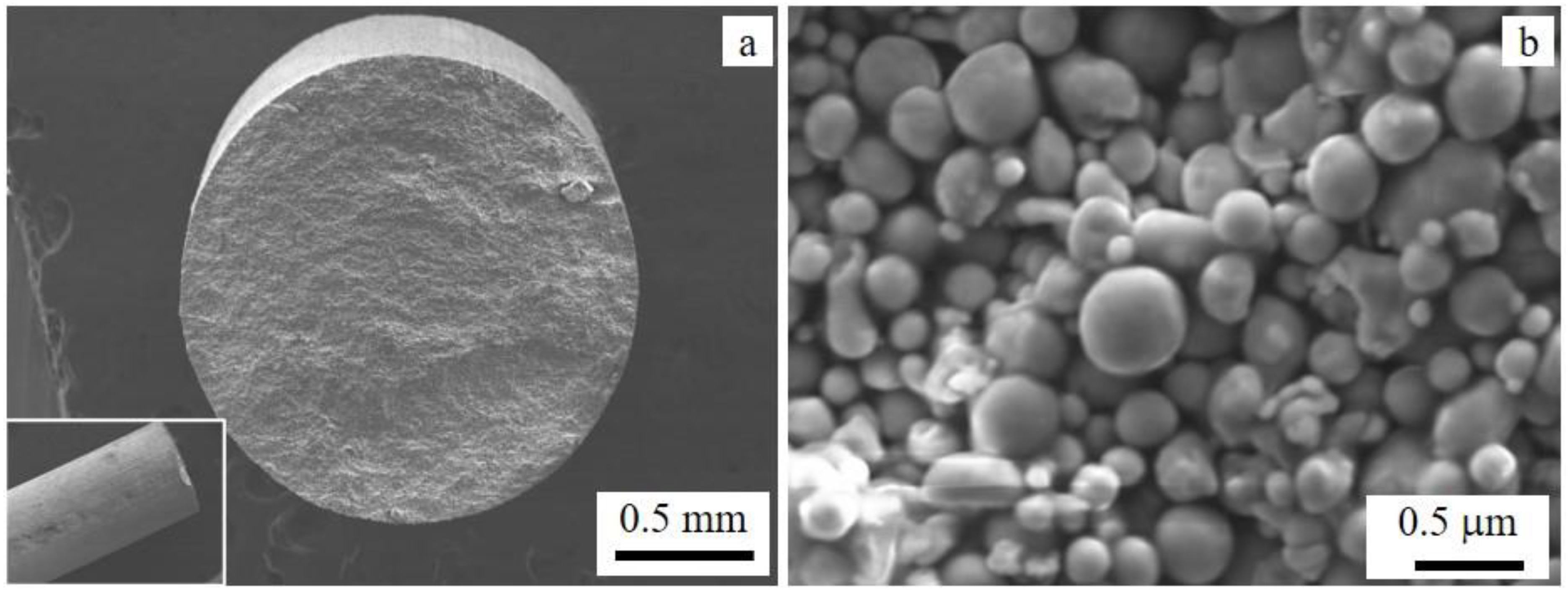
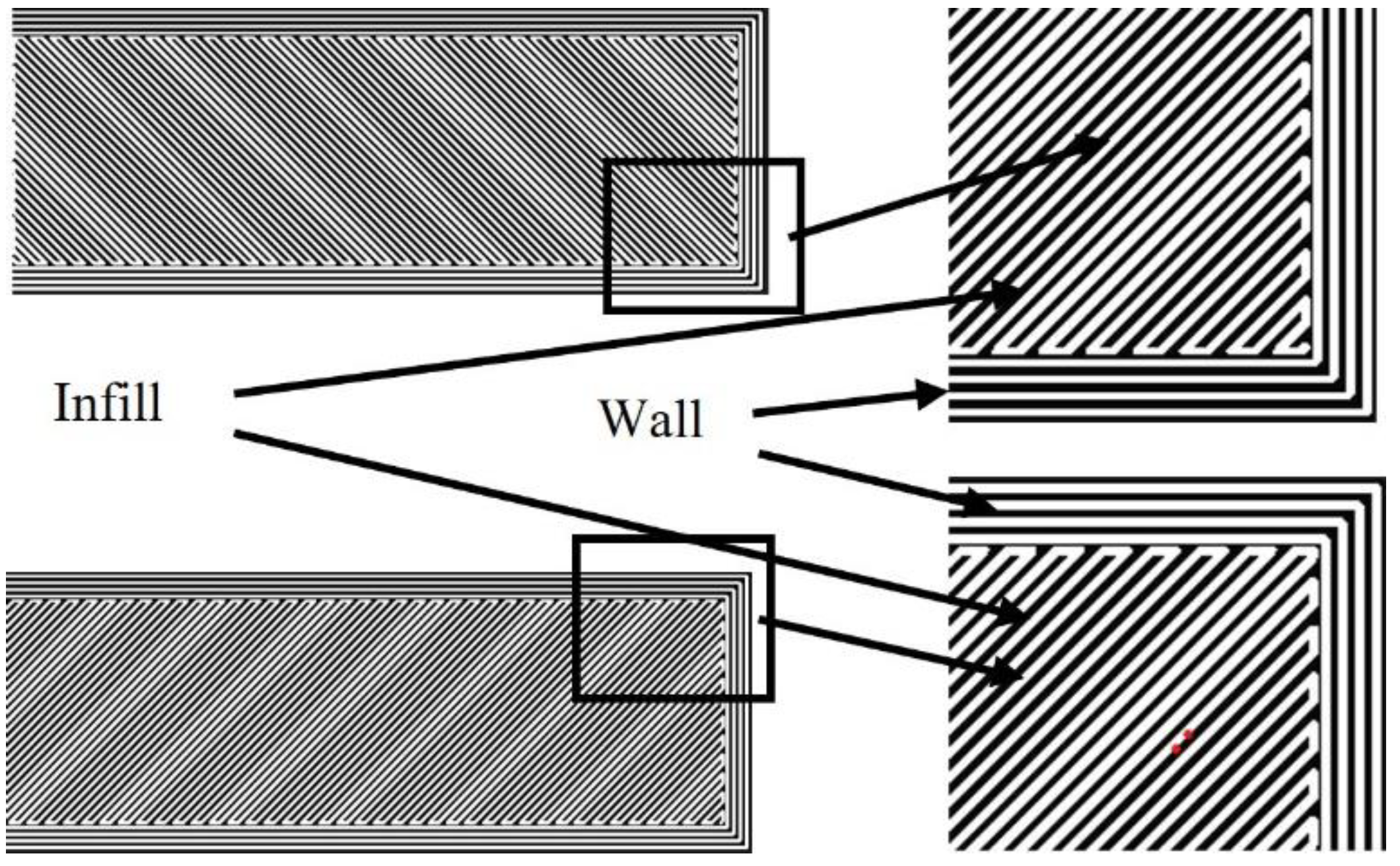
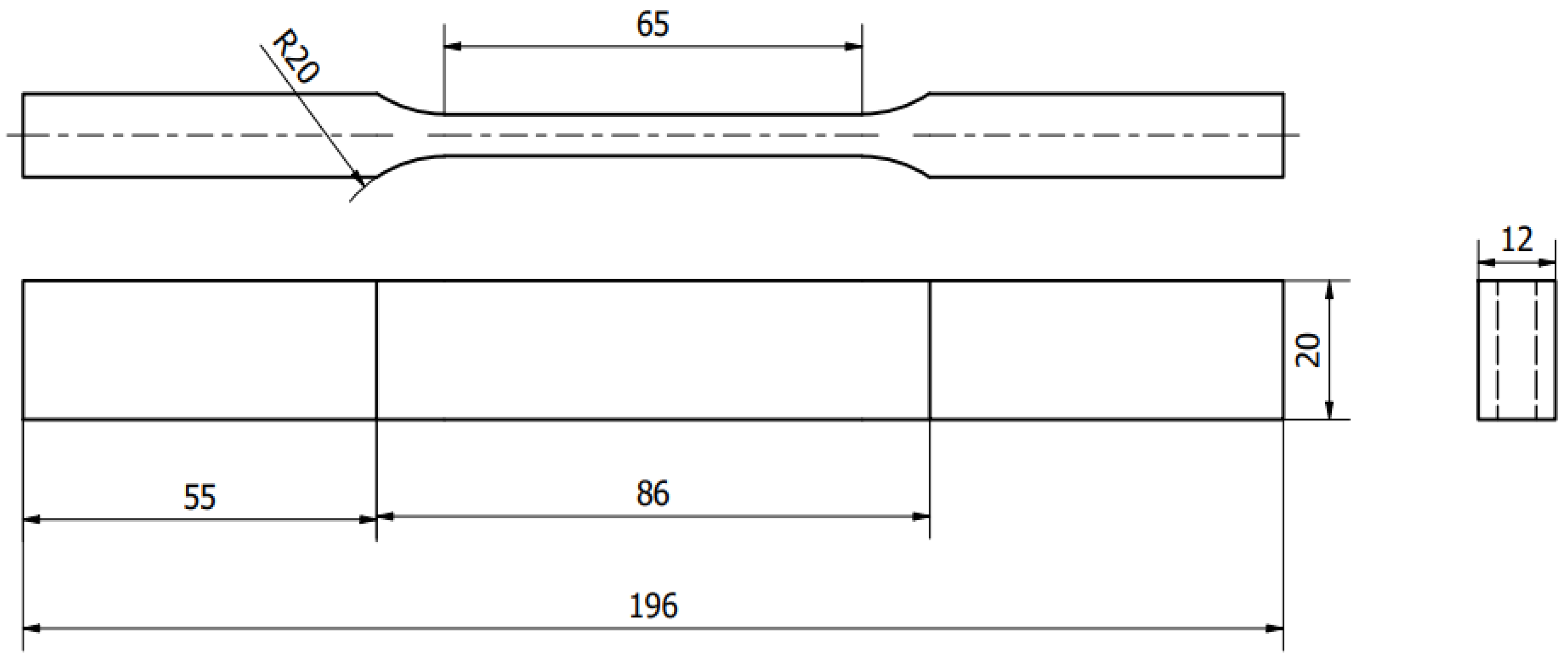
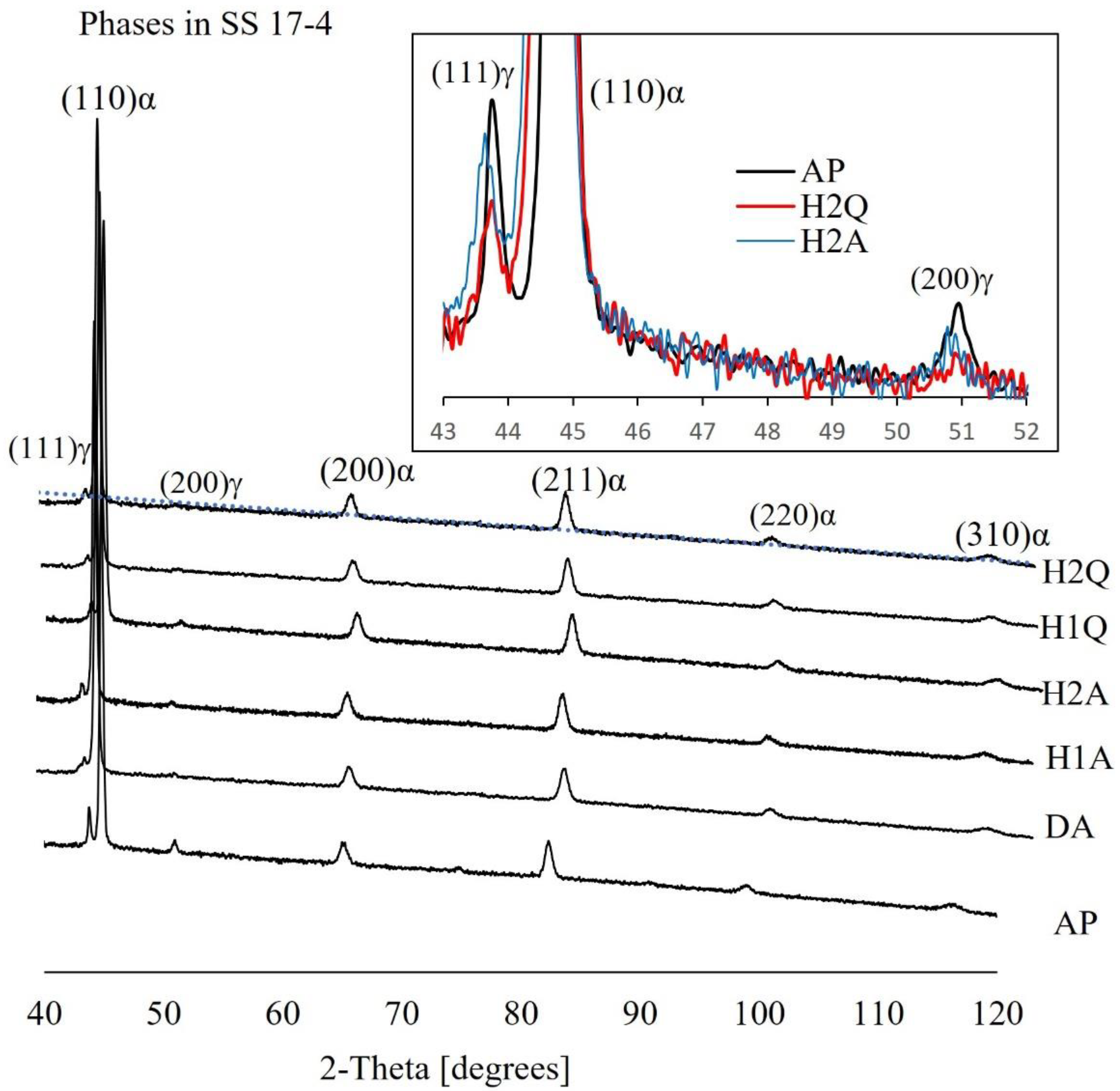

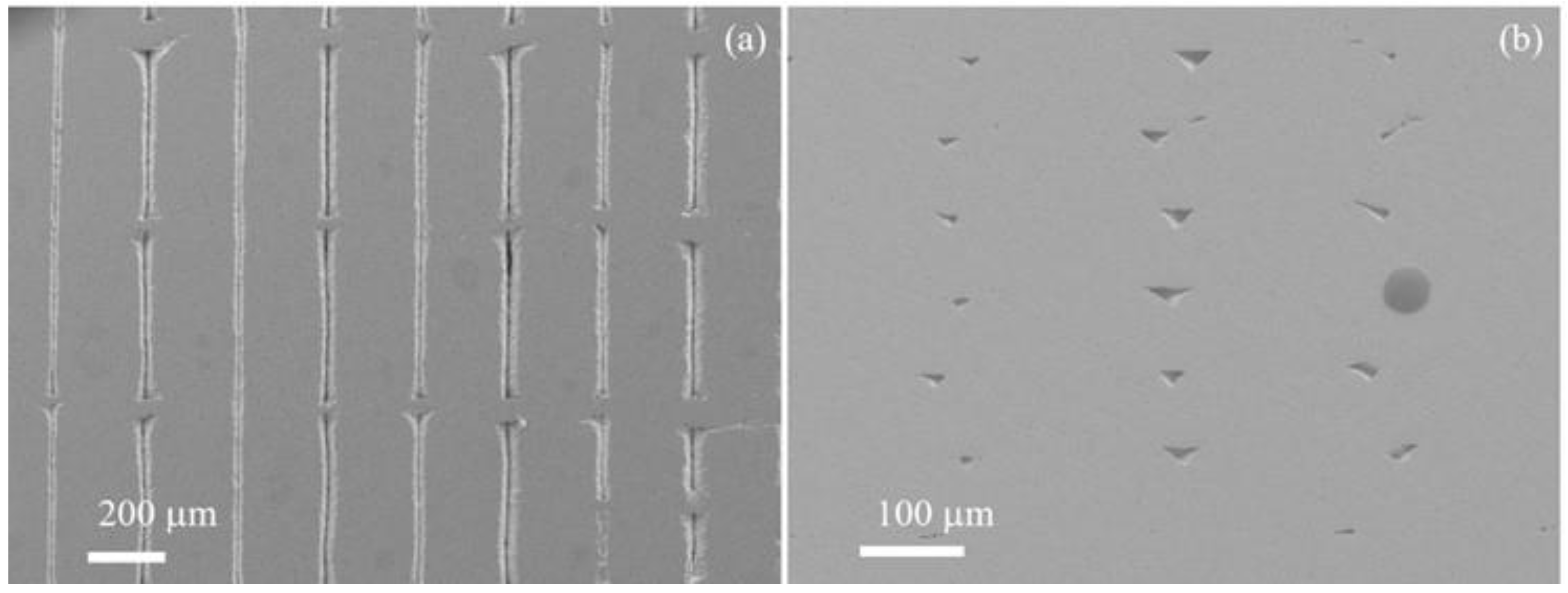
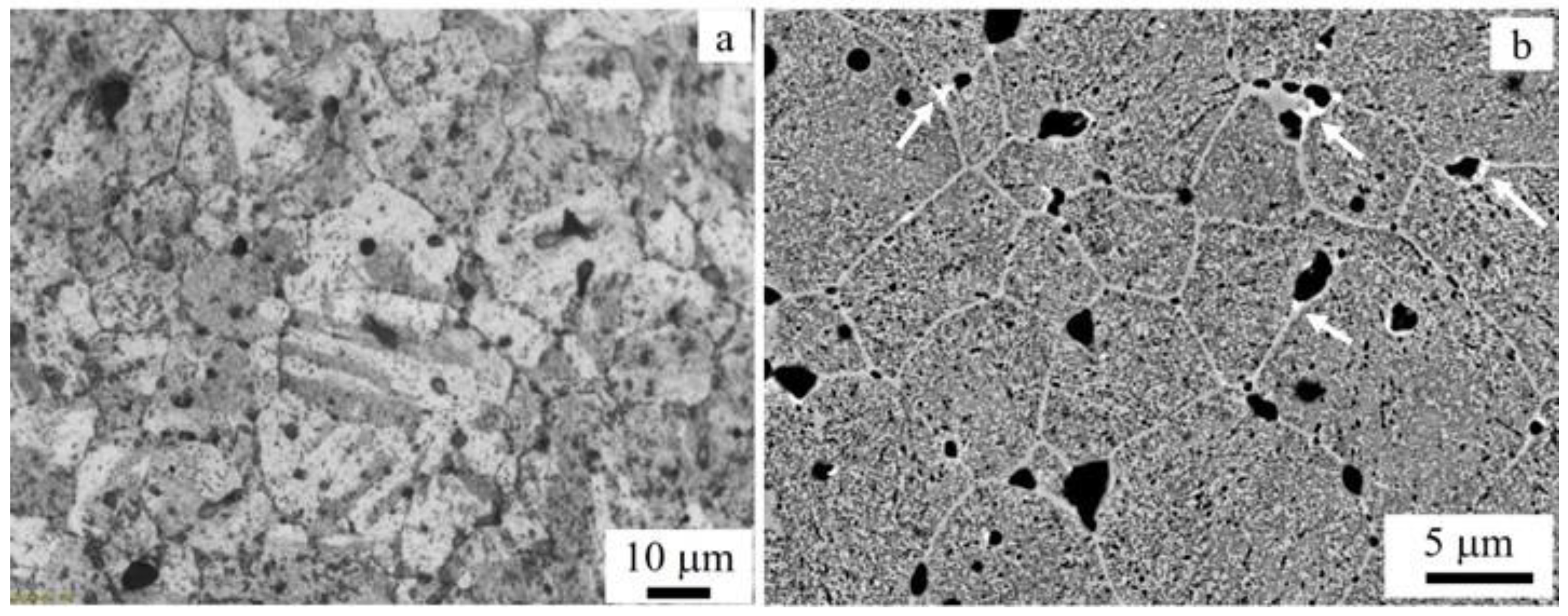
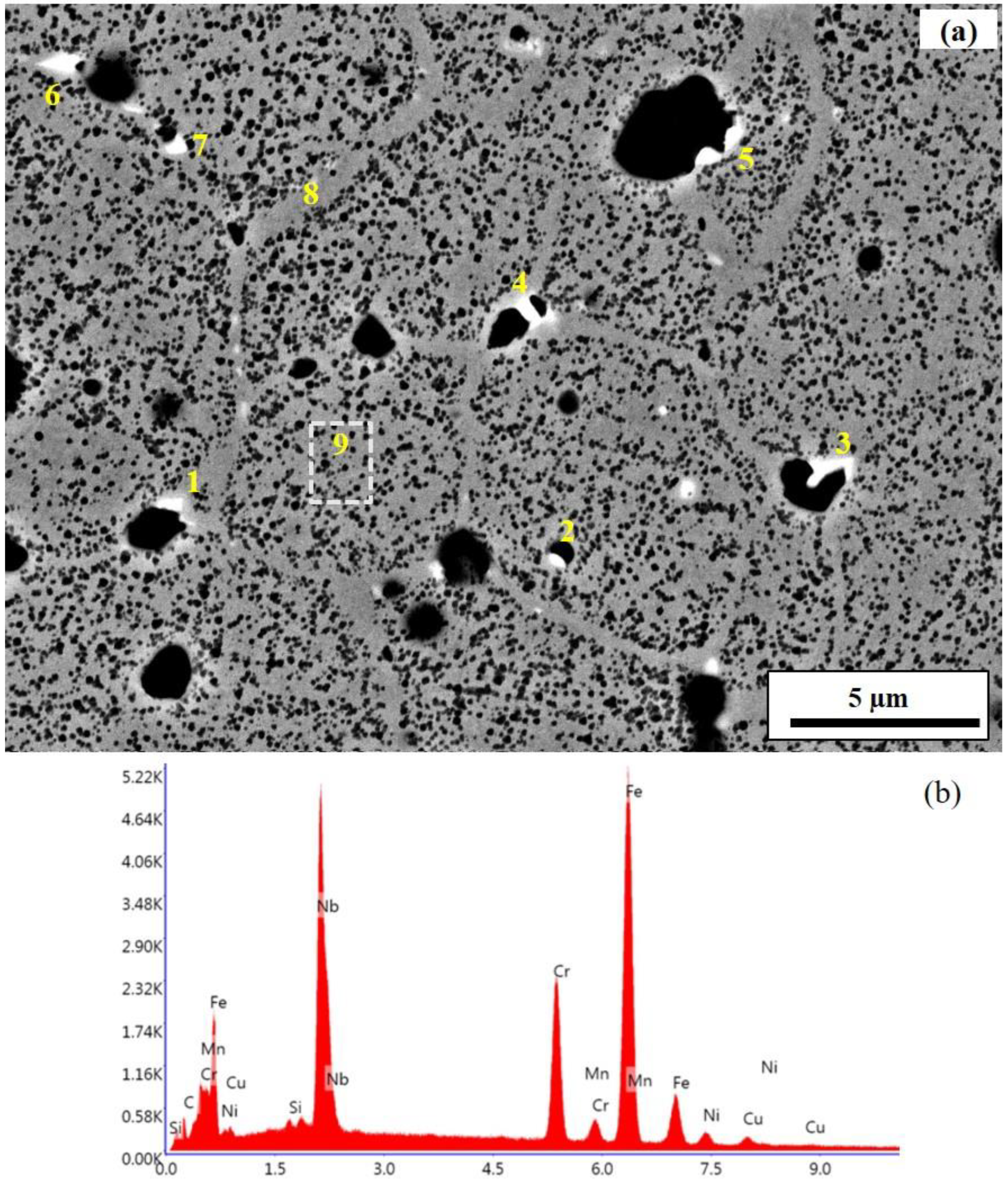
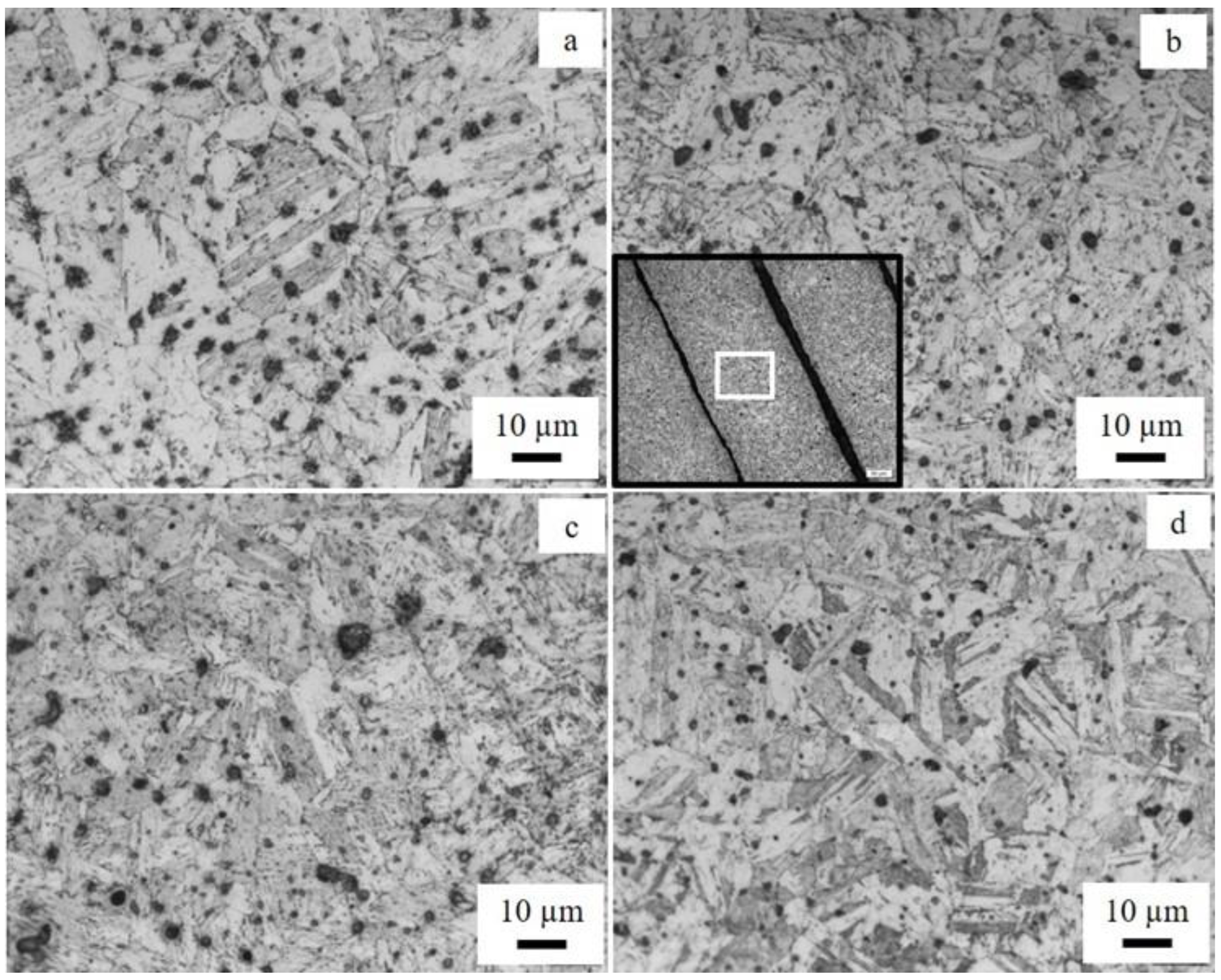

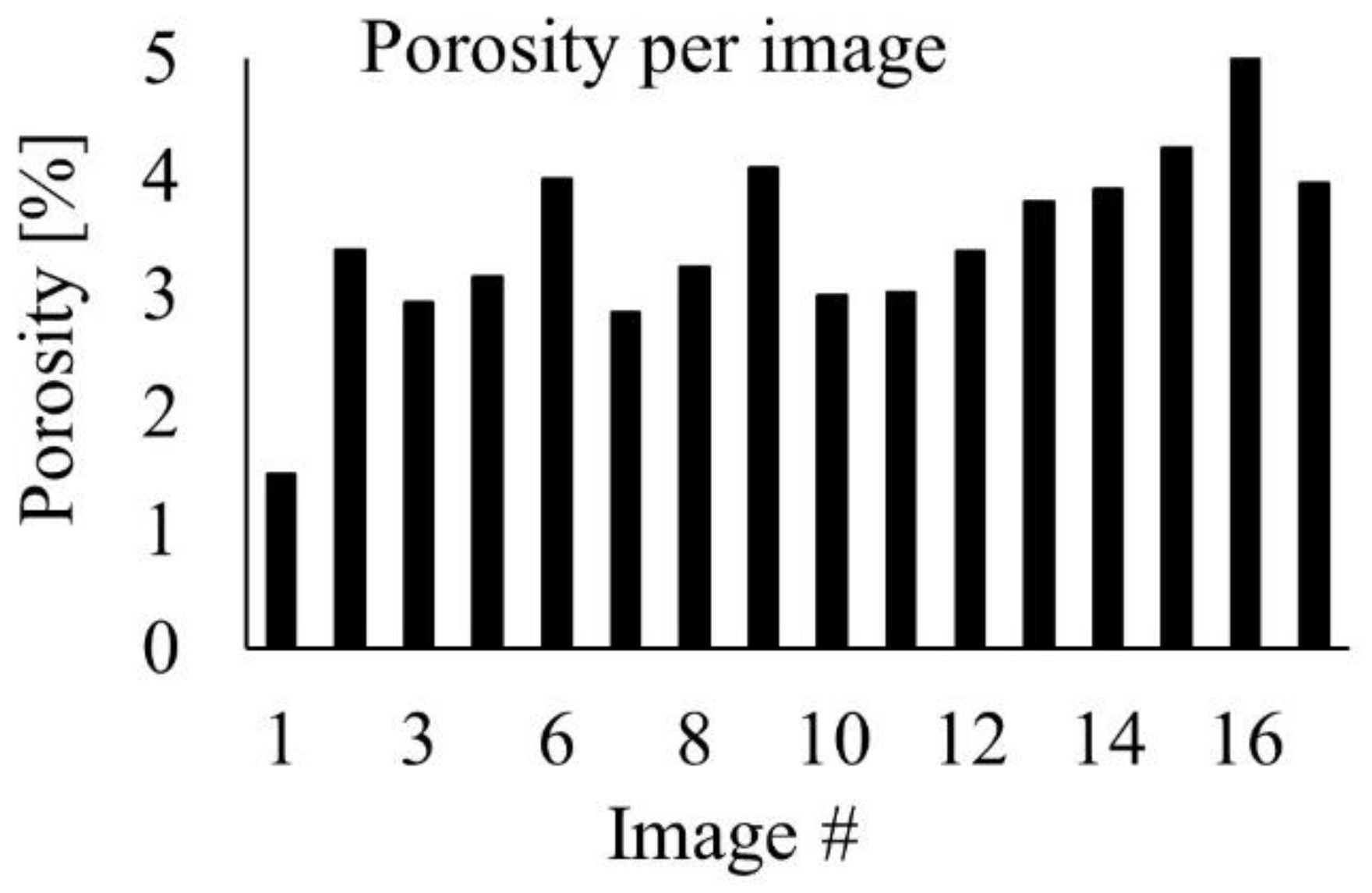
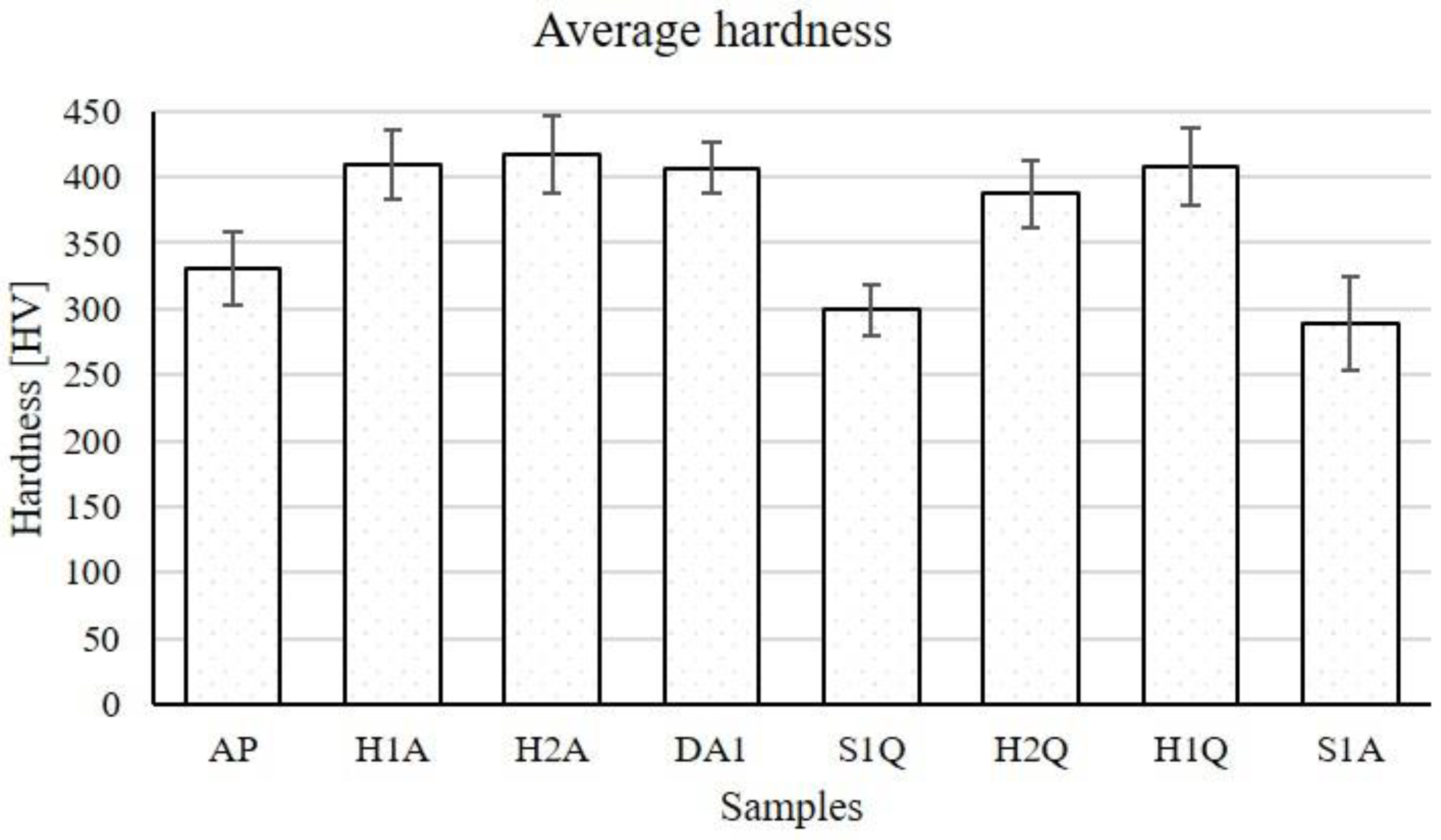
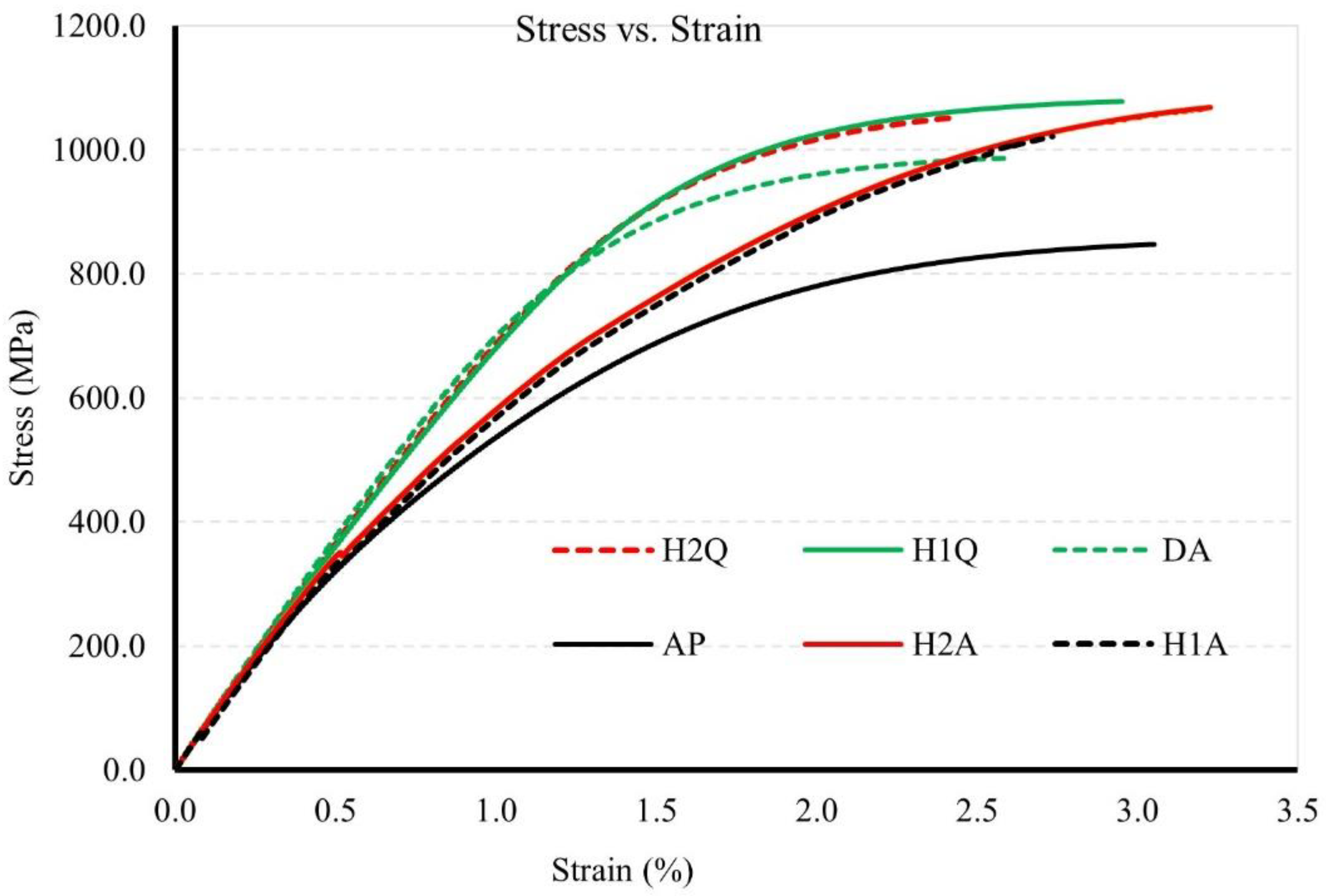
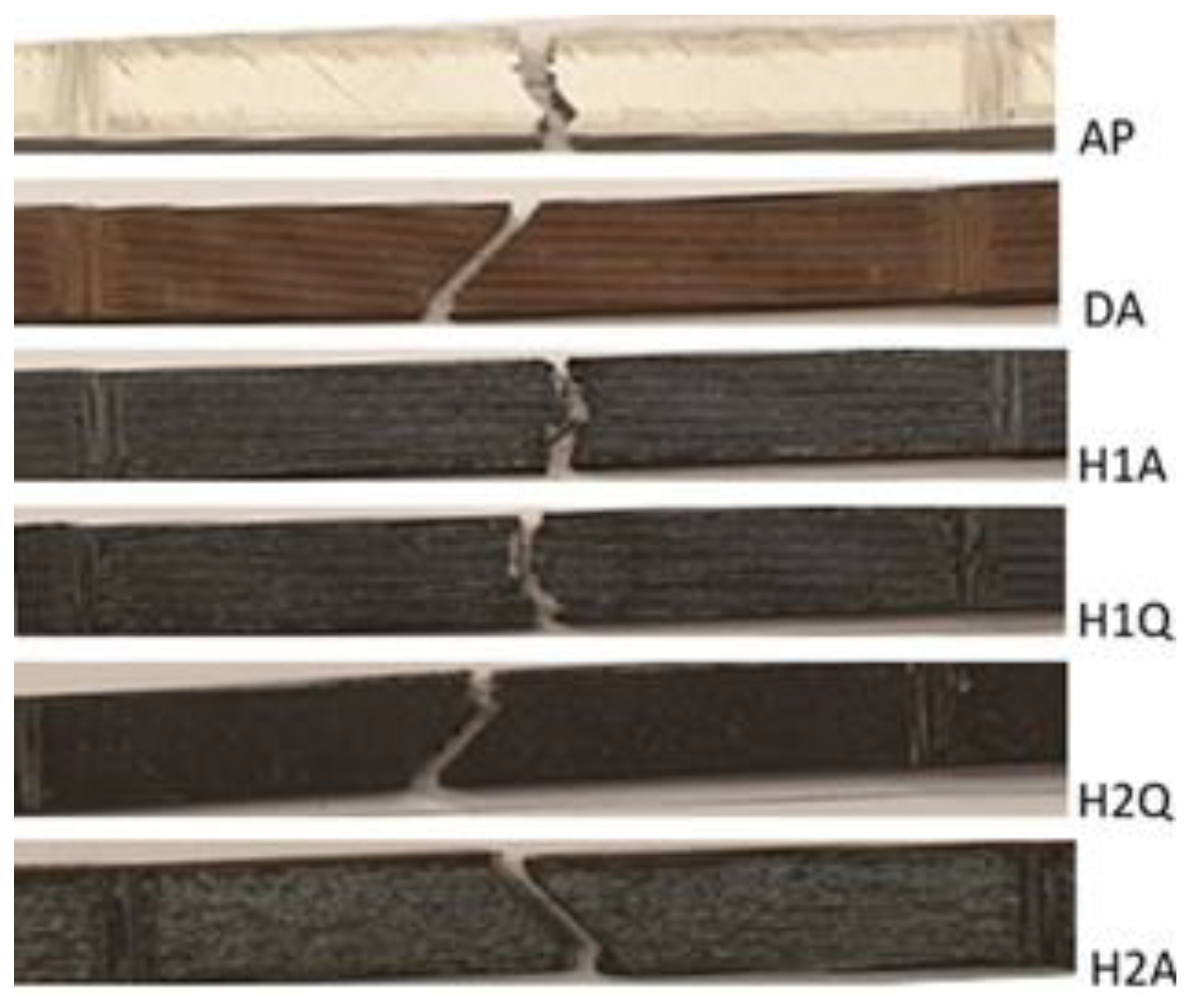
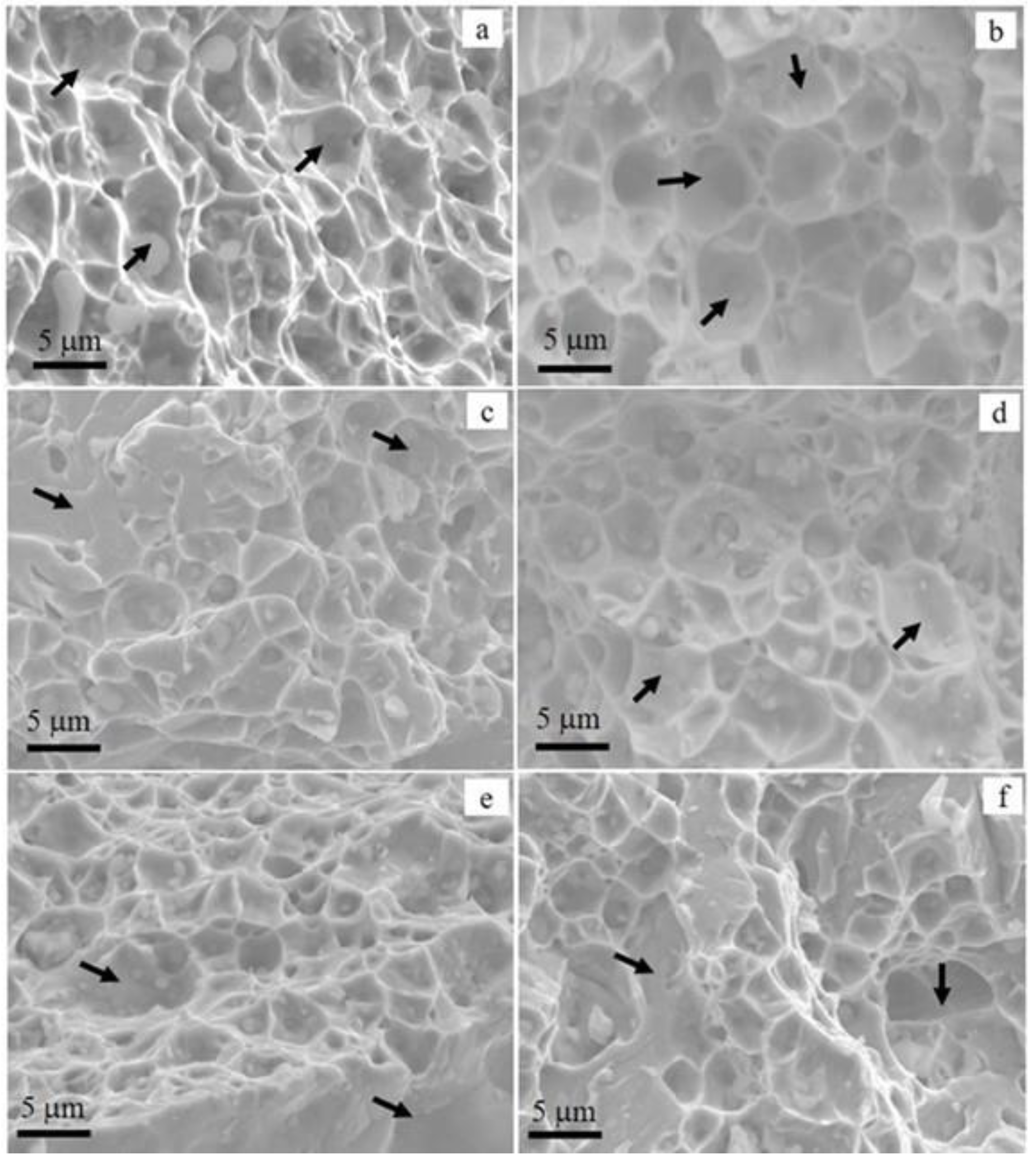
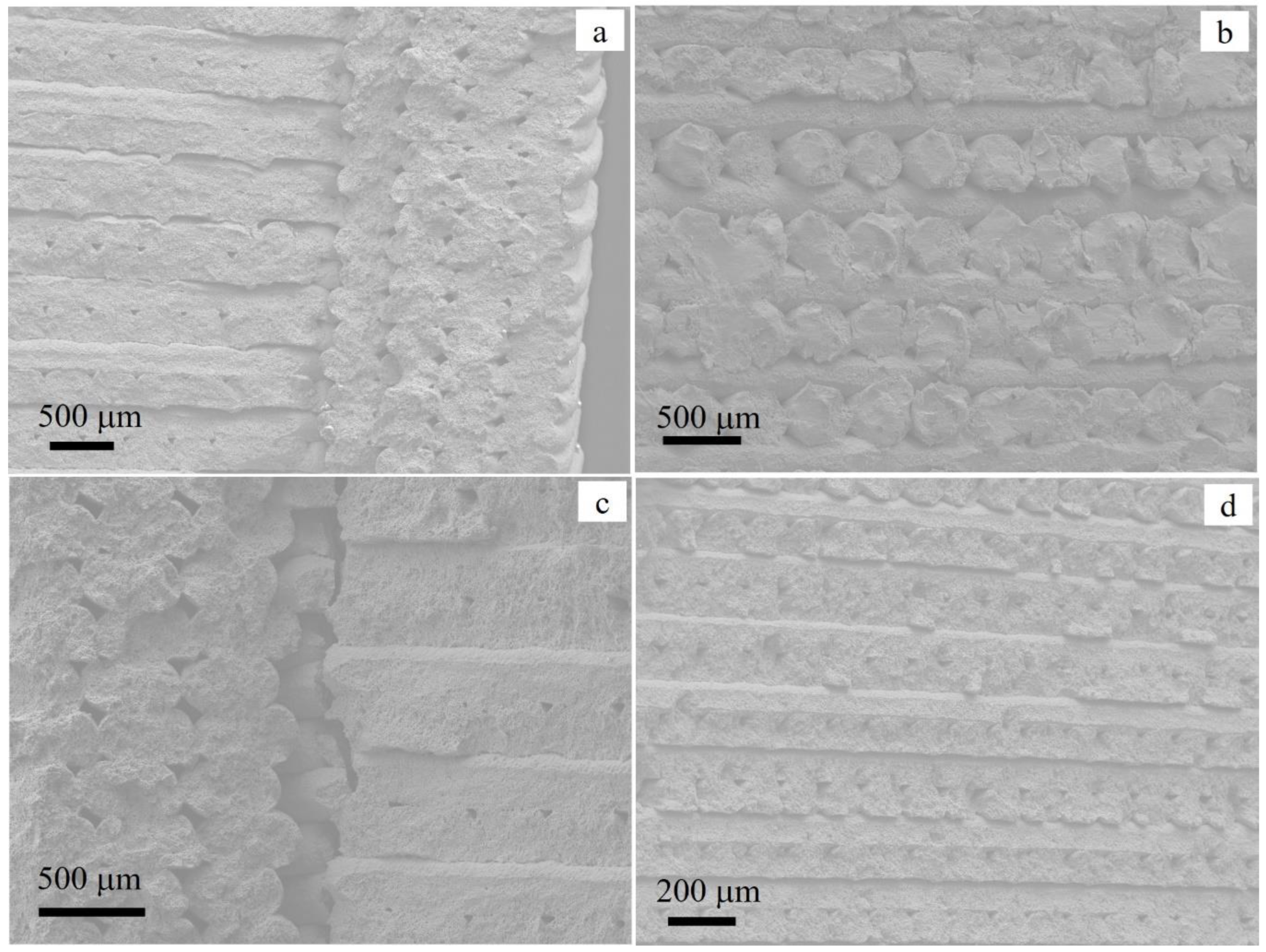
| Composition | Cr | Ni | Cu | Si | Mn | Nb | C | P | S | Fe |
|---|---|---|---|---|---|---|---|---|---|---|
| wt.% | 15–17 | 3–5 | 3–5 | 1 max | 1 max | 0.15–0.45 | 0.07 max | 0.04 max | 0.03 max | Bal |
| Orientation of Part | (X, Y, Z) (180°, 0°, 180°) |
|---|---|
| Layer thickness | 0.125 mm after sintering |
| Infill | Solid infill +45/−45° orientation |
| Wall | 4 walls |
| Surface boundary | 1 |
| Sintering T | Ca. 85% of melting T |
| Printing chamber T | 45 °C |
| Sample | Solid Solution Heat Treatment (SHT) | Aging | Cooling | ||
|---|---|---|---|---|---|
| T (°C) | Soaking Time (h) | T (°C) | Time (h) | ||
| H1A | 1038 | 0.5 | 482 | 1 | Air |
| H2A | 1038 | 1 | 482 | 1 | Air |
| H1Q | 1038 | 0.5 | 482 | 1 | Water |
| H2Q | 1038 | 1 | 482 | 1 | Water |
| DA | ---- | ---- | 482 | 1 | Air |
| S1A | 1038 | 0.5 | …. | …. | Air |
| S1Q | 1038 | 0.5 | …. | …. | Water |
| AP | As printed | ||||
| Spot | 1 | 2 | 3 | 4 | 5 | 6 | 7 | 8 | 9 |
|---|---|---|---|---|---|---|---|---|---|
| wt. % | 26 | 24 | 36 | 25 | 30 | 31 | 28 | 0 | 0 |
| Sample Condition | AM | SHT | Aging | YS | UTS | El | Hardness | Reference |
|---|---|---|---|---|---|---|---|---|
| °C/h | °C/h | MPa | MPa | % | HV | |||
| AP | MfMX | 551 | 847 | 3.1 | 331 ± 28 | This work | ||
| SA | MfMX | 482 | 832 | 986 | 2.6 | 407 ± 20 | This work | |
| H1A | MfMX | 1038 | 482 | 513 | 1021 | 3.6 | 409 ± 26 | This work |
| H2A | MfMX | 1038 | 482 | 602 | 1075 | 3.4 | 417 ± 29 | This work |
| H1Q | MfMX | 1038 | 482 | 921 | 1078 | 3.0 | 408 ± 29 | This work |
| H2Q | MfMX | 1038 | 482 | 892 | 1051 | 2.4 | 387 ± 26 | This work |
| AP | MfMX | 800 | 1050 | 5 | 302 | [16] | ||
| H900 | MfMX | 1038 | 482 | 1100 | 1250 | 6 | 354 | [16] |
| AP | MfMX | 823 | 940 | 3.67 | [28] | |||
| AP | L-PBF | 661 ± 24 | 1255 ± 3 | 9.9 ± 0.2 | 333 ± 2 | [29] | ||
| H900 | L-PBF | 480/1 | 945 ± 12 | 1417 ± 6 | 11.7 ± 0.8 | 375 ± 3 | [29] | |
| AP | L-PBF | 334.5 ± 15 | [27] | |||||
| H900 | L-PBF | 1038/4 | 482/1 | 524.5 ± 6 | [27] | |||
| As built | Wrought | 384.3 ± 8 | [27] | |||||
| H900 | Wrought | 1038/4 | 482/1 | 450.1 ± 9 | [27] | |||
| AP | L-PBF | 784 | 922 | 16.7 | 328 | [24] | ||
| H900 | L-PBF | 1038/1/AC | 482/1 | 1280 | 1399 | 10.5 | [24] | |
| AP | L-PBF | 570 | 944 | [7] | ||||
| L-PBF | 788/2 | 482/1 | 1126 | 1457 | [7] |
Publisher’s Note: MDPI stays neutral with regard to jurisdictional claims in published maps and institutional affiliations. |
© 2022 by the authors. Licensee MDPI, Basel, Switzerland. This article is an open access article distributed under the terms and conditions of the Creative Commons Attribution (CC BY) license (https://creativecommons.org/licenses/by/4.0/).
Share and Cite
Akessa, A.D.; Tucho, W.M.; Lemu, H.G.; Grønsund, J. Investigations of the Microstructure and Mechanical Properties of 17-4 PH ss Printed Using a MarkForged Metal X. Materials 2022, 15, 6898. https://doi.org/10.3390/ma15196898
Akessa AD, Tucho WM, Lemu HG, Grønsund J. Investigations of the Microstructure and Mechanical Properties of 17-4 PH ss Printed Using a MarkForged Metal X. Materials. 2022; 15(19):6898. https://doi.org/10.3390/ma15196898
Chicago/Turabian StyleAkessa, Adugna D., Wakshum M. Tucho, Hirpa G. Lemu, and Jørgen Grønsund. 2022. "Investigations of the Microstructure and Mechanical Properties of 17-4 PH ss Printed Using a MarkForged Metal X" Materials 15, no. 19: 6898. https://doi.org/10.3390/ma15196898
APA StyleAkessa, A. D., Tucho, W. M., Lemu, H. G., & Grønsund, J. (2022). Investigations of the Microstructure and Mechanical Properties of 17-4 PH ss Printed Using a MarkForged Metal X. Materials, 15(19), 6898. https://doi.org/10.3390/ma15196898






